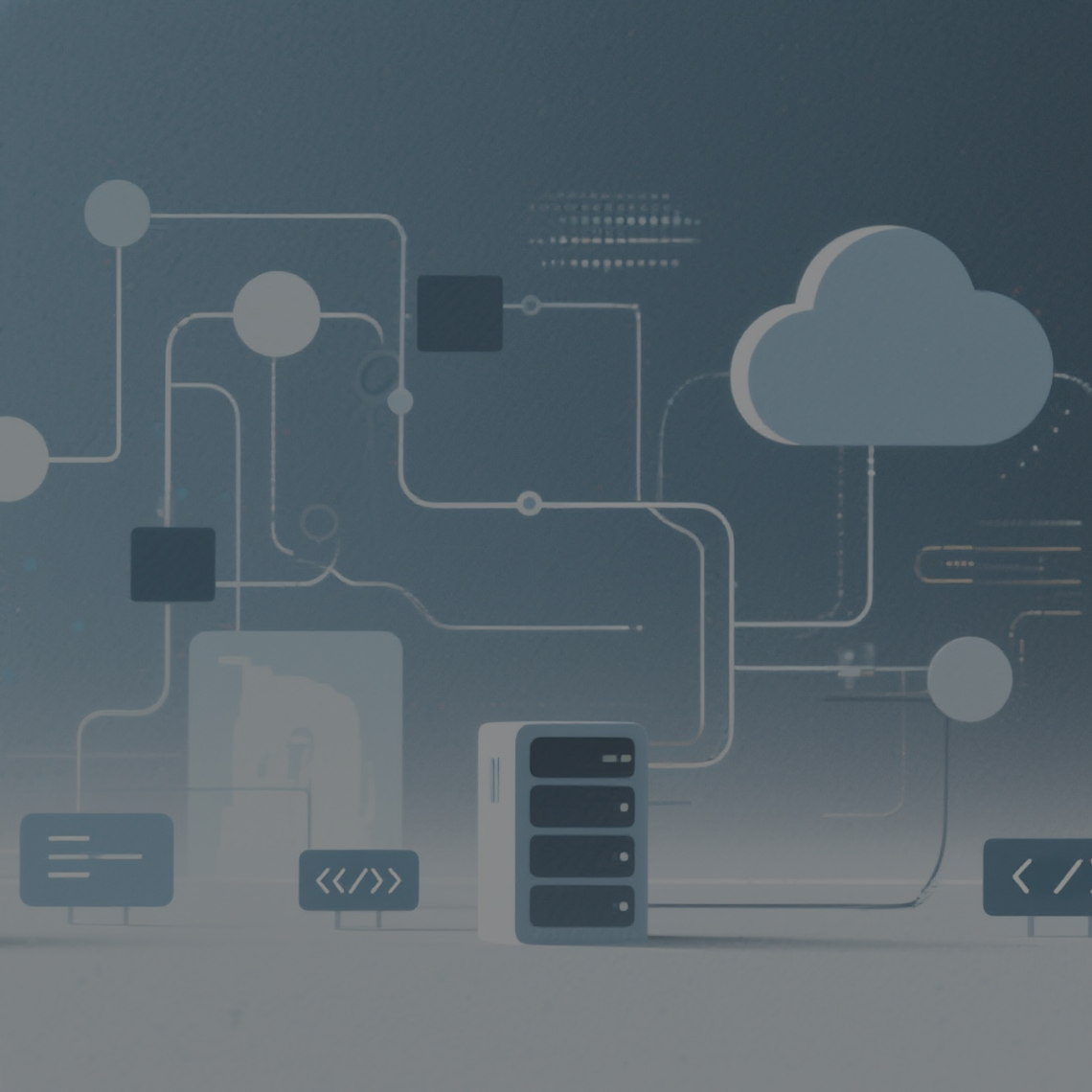Is your business leveraging artificial intelligence? If not, you’re not alone. Our research shows that 61% of enterprise organizations haven’t adopted artificial intelligence (AI) tools. Yet 72% of business leaders want AI adoption within the next three years according to CFO.
AI tools can make quicker work of large data sets and leverage the data companies already have. With neither technology—big data or artificial intelligence—going anywhere, it stands to reason that the two of them working together proves better than apart.
But while most companies have big data, they don’t have the AI tools that can analyze the data that they’re producing.
What’s in their way? Not knowing how to get started.
We’ve put together a design thinking model, complete with four steps to help businesses get started on an AI project.
1. Determine a use case
Understanding both where AI excels and where a business can most benefit is a great starting place. A few use cases include: summarization, documentation, content creation, design, programming, or personalization. While there are many more use cases out there, we recommend starting within one of these realms.
Take this example: We worked with a client to build a scalable architecture to manage millions of PDFs and other forms of unstructured data. The business case was to save hundreds of manual hours scanning and reviewing the documentation to produce letters and legal findings off the unstructured data.
We used ChatGPT to summarize large amounts of data, create content and enable conversations through prompts. We quickly discovered most of the time was designing and choosing the right cloud architecture, and determining how to properly build the prompts to ask the right questions. Once the prompts were determined, the architecture was implemented and the team saved 80% of their time on researching and drafting documents through GenAI’s creative prompt engineering.
Another example leverages text to image creation using Stable Diffusion. We worked with one of the world’s largest media organizations to leverage deep learning models to generate high-quality images that are consistent with our prompt. By modifying that prompt and getting super specific, the image we were looking to create can be extremely accurate and generated in a fraction of time it would normally take someone to manually develop and create.
Andela also internally leverages LLMs to help with hyperpersonalization. One example of this is our Talent Decision EngineTM, which is AI driven. The Andela Talent Cloud efficiently automates and manages the complete global talent lifecycle. It’s a mix of an amazing matching team but also AI, which is why we have a 96% success rate. Powerful AI-matching algorithms learn from hundreds of touch points in the hiring journey to pinpoint the best engineers for the roles and skills required. We’re exploring how to further hyperpersonalize soft skills through a UX driven QA interview process which could save costs and drive customer engagement.
Generate a company survey
Gather input from your company to hone in on where AI can be the most beneficial. We recommend generating a survey across the company to help with data-driven decision making.
Then, set up a steering committee made up of champions from all stakeholders related to the identified business problems. By having advocates across the business, you gain buy-in across the organization to help get the transformational changes you want.
Explain AI to your team
It’s crucial to properly explain AI and its potential if you want to gather the right use cases. It’s likely that all of your stakeholders have the info you need, they just need to be armed with how it can work. Here’s an anecdote to help describe it:
Think of AI as someone who learned English or how to speak but in a featureless square room. It has no context outside of what it’s been trained with, but through feeding it data and context learned from examples and stories, audio images, etc, it does its best to imitate and guess what a person will say or do in a situation based on probability. Think of Johnny 5 from the movie, Short Circuit, the image of him reading through a shelf full of encyclopedias in a minute.
These LLMs you keep hearing about give you a Johnny 5 with a good amount of general instruction, but the real supercharge comes when you tie in domain knowledge specific data from the company, like emails, chats, Salesforce, and internal databases, to give your GenAI bot context around your industry and your company’s culture, brand and customer sentiment. That’s where you can unlock hyperpersonalization, interesting workflows, and a self-directed engine that can have many tangible business benefits.
2. Build a business case
Next, leverage the data and input collected from the survey or committee to prioritize. Is there an overwhelming amount of employees interested in summarization? Or maybe programming will be the most beneficial?
Accumulate those results, look at common themes, and tie those results to an overarching business benefit and business case. This can include: cutting costs, increasing productivity, generating revenue, staying ahead of competitors, better understanding AI capabilities, or increasing work satisfaction.
Tying in a business case and ROI will help to determine where you want to start developing a team around and what business goals your project will contribute to.
3. Validate your customer journey
Before you start any project, remember to stay focused on your customer. Get a clear picture of your customer journey and look at the pain points across awareness, consideration, decision, service, and advocacy. How does AI solve a real customer problem?
Once you define your current customer journey, it can help you understand what a new one could look like.
4. Define measurement
Lastly, understand what metrics you will use to measure success and ROI. Ask yourself questions that you will get from the business to help define these. Here are a few related to GenAI that we see regularly asked:
Technical metrics:
- How fast can a workflow or process be improved?
- How much hallucination is expected?
- Can it cover all the languages?
Business metrics:
- How is user engagement measured?
- How does AI help with retention through hyper personalization?
- How much can we reduce cost?
Prerequisites
Don’t forget that as you define your project, you will also need a strong team to make this vision come to life.
As new models and Generative AI processes further mature and evolve, your team will need to be equipped with the relevant skills. It’s not just the models themselves that make the engine work, but they also require a supporting architecture and ecosystem.
Depending on the use case, you’ll likely need LLM deployment engineers, data engineers and software developers.
There are also new titles emerging such as AI content design engineers, ethical engineers, AI auditors, AI security engineers, and prompt engineers to name a few.
In our recent webinar, we dove deep on a design thinking model, how to get started, and successful use cases.
How Andela can help
Andela helps businesses streamline and automate their AI initiatives. Our AI and machine learning (ML) solutions power big data models and reduce the labor intensive processes that go with it.
Our GenAI Impact Assessment is a tailor-made six-week program that focuses on the identification and realization of a GenAI business solution. We stand up a completely managed team of experts to ensure the success of the program from start to finish. We can also help stand up AI talent and teams at the production stage, meeting you anywhere you are in your AI journey.
Explore AI solutions, establish and test infrastructures and AI models, create and define a model, and then learn how to scale it with the help of Andela’s skilled engineers.
Learn more about how Andela can help.




.avif)



.png)










